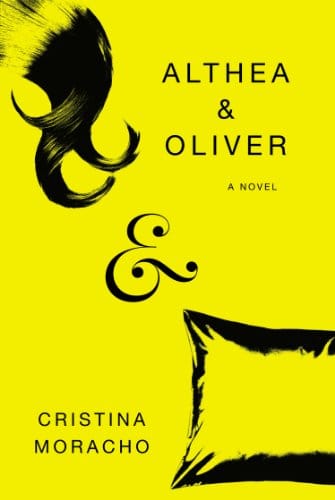Althea and Oliver: An Unforgettable Coming-of-Age Novel
A vivid 1990s coming-of-age story, "Althea and Oliver" explores friendship, illness, and identity with unflinching honesty.

Introduction: Why "Althea and Oliver" Still Resonates
Published in 2014, Cristina Moracho’s debut novel "Althea and Oliver" quickly captured the attention of readers looking for a raw, authentic coming-of-age story. Set in the grunge-infused 1990s, the book follows two inseparable best friends as they navigate the messy transition from adolescence to adulthood. With its vivid North Carolina backdrop, fearless treatment of illness, and a soundtrack that will make any Gen-Xer nostalgic, the novel continues to gain new fans nearly a decade after its release.
Quick Plot Overview
Althea Carter and Oliver McKinley have lived across the street from each other in Wilmington since kindergarten. Now high-school seniors, their friendship teeters on the edge of something more, complicated by Oliver’s mysterious, uncontrollable bouts of sleep that last for days. After an impulsive night changes everything, Oliver heads to New York City in search of experimental treatment, while Althea embarks on her own reckless journey. The narrative alternates between their viewpoints, delivering a dual perspective that keeps readers emotionally invested until the last page.
Exploring the Central Themes
Friendship Turned Romance
At its core, "Althea and Oliver" examines how friendship can morph into attraction and confusion. Moracho depicts the gray area between platonic and romantic feelings with painful precision, reminding readers that the people closest to us can also cause the deepest wounds.
Identity and Self-Discovery
Both protagonists struggle to define themselves outside their intense bond. Althea rebels through music, cigarettes, and sketched tattoos, while Oliver’s illness forces him to question who he is when he can’t even control his own consciousness. Their separate quests for identity make this more than a simple love story—it’s a frank meditation on selfhood.
Illness and Bodily Autonomy
Oliver’s rare sleep disorder, reminiscent of Kleine-Levin syndrome, adds urgency and realism to the plot. Moracho neither romanticizes nor sensationalizes his condition; instead, she shows how chronic illness rearranges relationships and forces tough choices about autonomy, consent, and care.
Character Deep Dive
Althea is impulsive, fiercely loyal, and sometimes exasperating. She lies to authority, steals a car without a second thought, and yet her vulnerability keeps readers rooting for her. Oliver, by contrast, is introspective and cerebral, a budding scientist who clings to logic even as his own body betrays him. Secondary characters—like Natalie, the queer punk who befriends Althea in New York, and Arthur, the gentle research assistant—round out a cast that represents the messy complexity of late-teen life.
Setting: 1990s Wilmington and New York City
The 1990s coastal South is more than just a backdrop; it shapes the characters’ culture, slang, and soundtrack. From mixtapes packed with Sonic Youth and The Breeders to late-night diner booths sticky with spilled soda, the setting is soaked in sensory detail. When Oliver transfers to Manhattan for treatment, the frenetic pace of the city contrasts sharply with sleepy Wilmington, underscoring how geography influences mood and opportunity.
Moracho’s Writing Style
Moracho mixes lyrical prose with razor-sharp dialogue, creating a voice that feels immediate yet literary. She is unafraid of long, meandering sentences that mimic a stream of consciousness, then cuts through the haze with a single line that lands like a gut punch. Her approach to point of view—switching every chapter—helps readers empathize equally with both leads, a balancing act many dual-narrative books fail to achieve.
Why the Novel Stands Out in YA Literature
While contemporary YA often sanitizes teen experiences, "Althea and Oliver" refuses to shy away from morally ambiguous decisions, underage drinking, or teenage sexuality. Its unflinching honesty invites comparison to classic works like "The Perks of Being a Wallflower" or "Eleanor & Park," yet Moracho’s novel offers a fresh lens by foregrounding chronic illness. This blend of realism and empathy has made the book a staple on high-school reading lists and book-club shelves alike.
Who Should Read "Althea and Oliver"?
If you love character-driven stories that balance heartache with hope, this novel is for you. Fans of coming-of-age fiction, 1990s nostalgia, or narratives that explore medical mysteries will find plenty to savor. Educators looking for texts that spark discussions about consent, mental and physical health, and the blurred lines of teenage relationships will also appreciate its classroom potential.
Tips for Getting Even More Out of the Book
1. Create a playlist of songs mentioned in the novel and listen as you read to immerse yourself in the era.
2. Map Althea and Oliver’s journey from Wilmington to New York to visualize their emotional distance.
3. Discuss the ethical dilemmas surrounding Oliver’s medical trials in a book club to unpack the novel’s nuanced portrayal of healthcare.
Final Thoughts
"Althea and Oliver" is more than a tale of teenage angst; it is a fearless exploration of friendship, illness, and the search for identity. Cristina Moracho’s evocative writing and fully realized characters ensure the story lingers long after the final chapter. Whether you pick it up for the 90s throwbacks or the heartfelt exploration of what it means to grow up, this novel promises an unforgettable ride.



